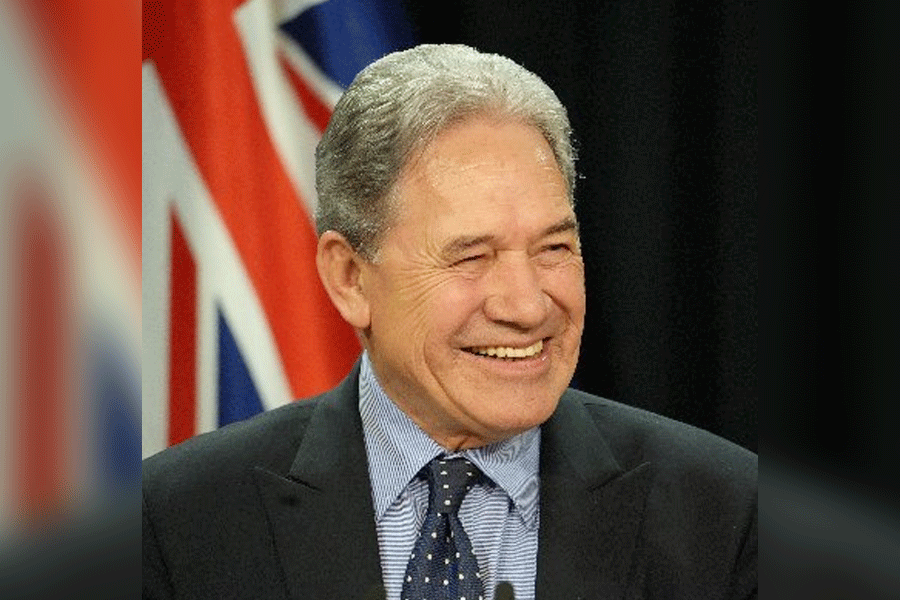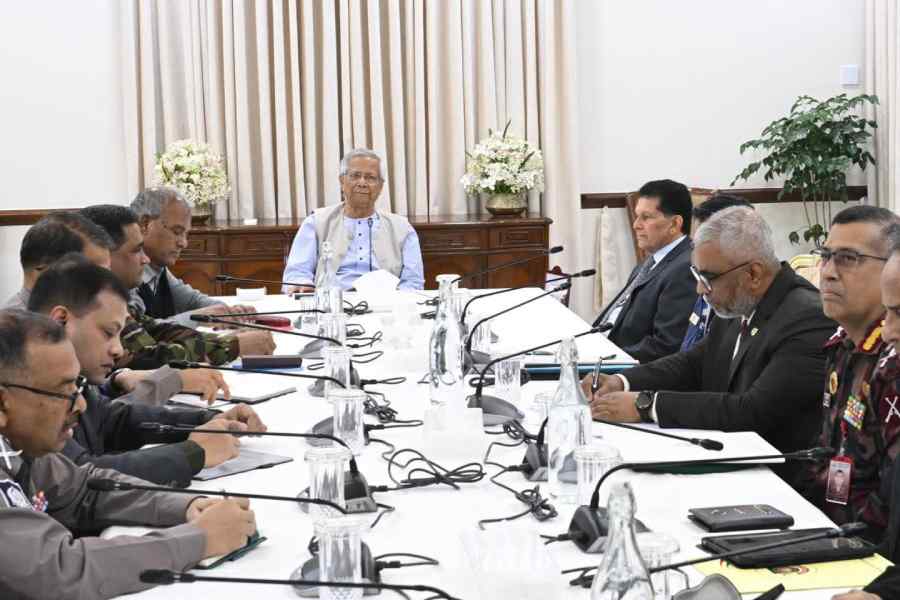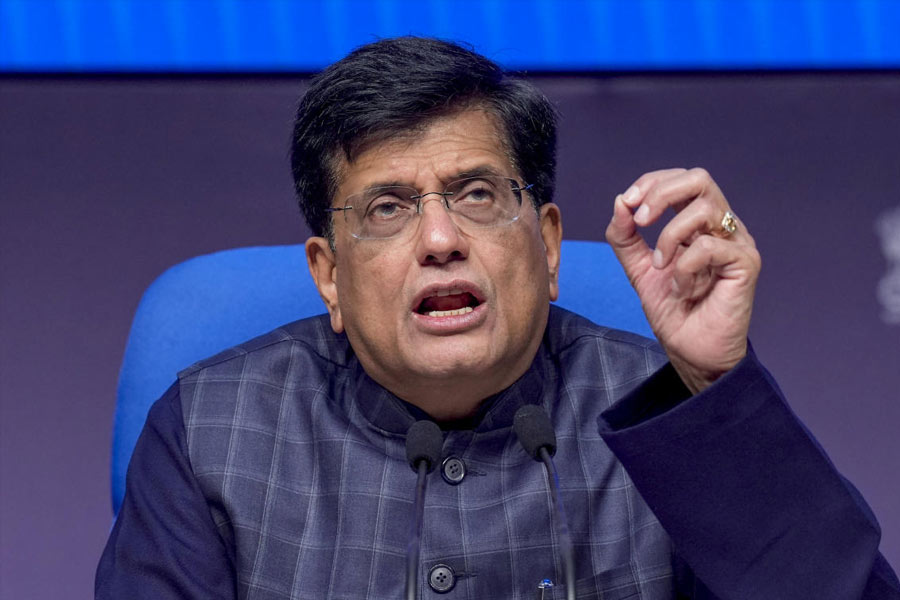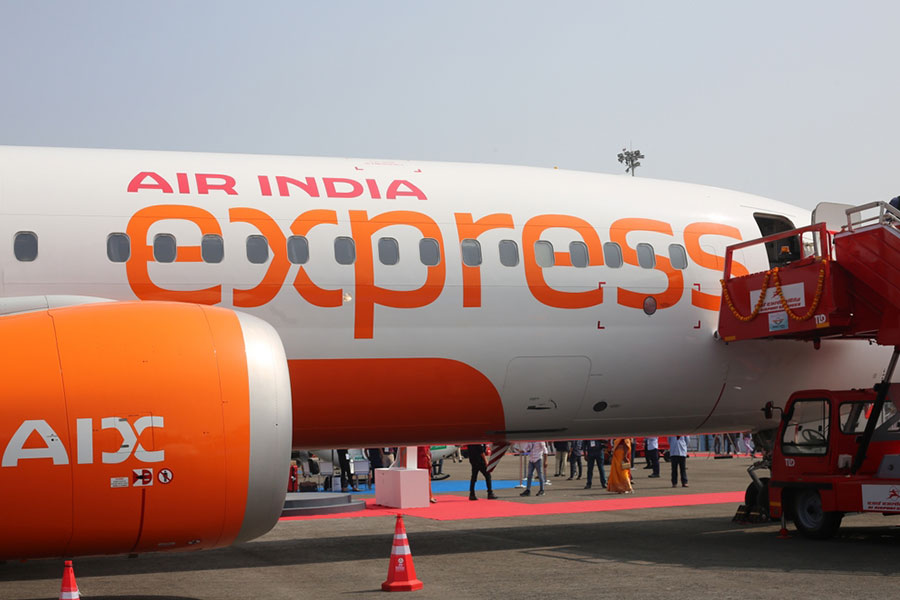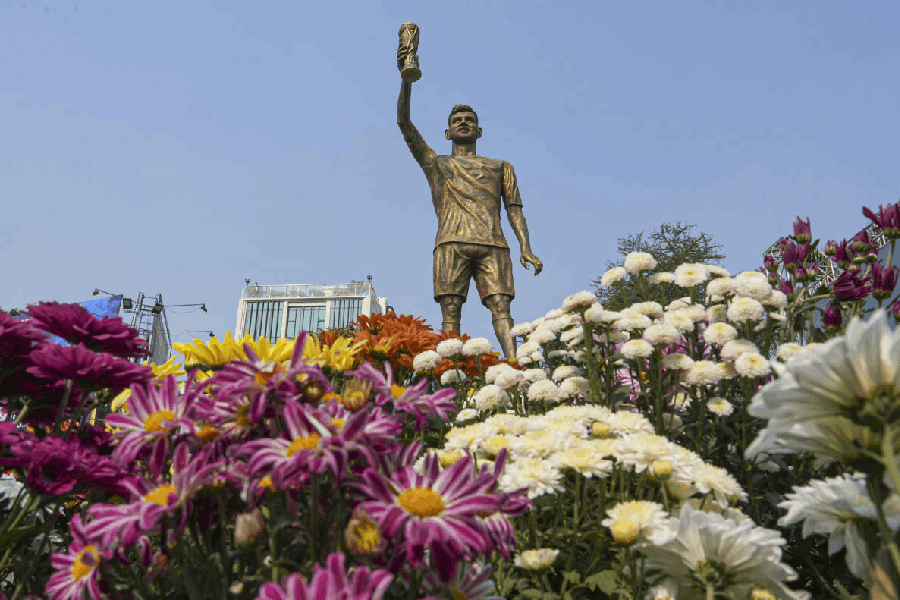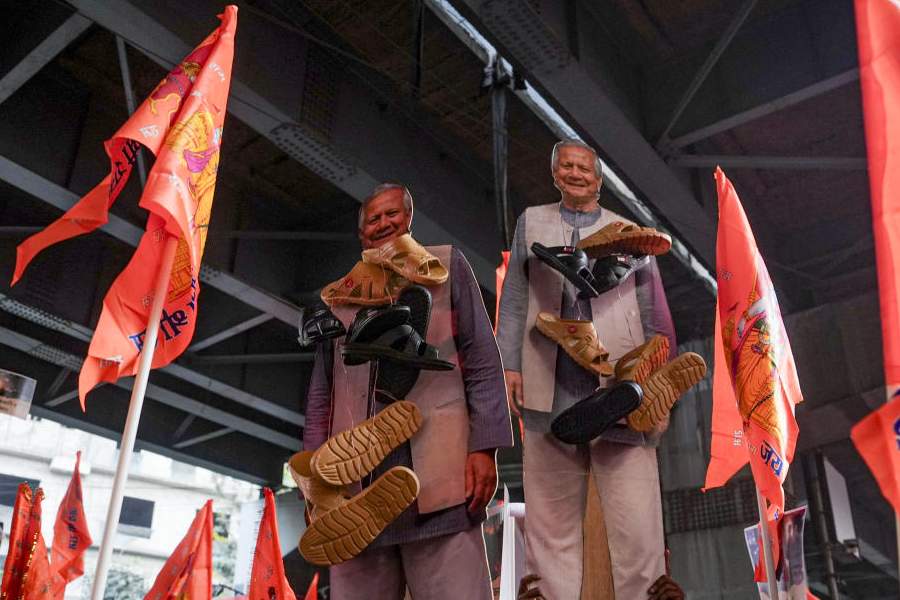 |
The ancient World War II elevator was taking forever to come. It was rush hour in London and my painstakingly ironed maroon kurta was getting crushed in the crowd. The office-goers at Belsize Park Tube Station were immersed in the Evening Standard and cocooned in their world of portable music. Some were still grappling with the Times crossword that they started during the morning journey to work.
It was a posh part of London, located at the edge of the city’s swish Hampstead Heath. I emerged from the plodding elevator at street level, the cold air hitting us as the doors thundered open. I popped on a fleece jacket that totally spoiled the ethnic look, but being October, temperatures at that time of the evening were already touching 12°C.
I purposefully strode down the high street, and while many ducked into the various pubs and fancy eateries that dot the area, my destination was different. I was not after a pint or a steak and kidney pie. Bhog was on my menu. It was Mahasaptami, and I was headed to Hampstead Town Hall for the Belsize Park Durgotsav, London’s largest Pujo!
And it was not merely an overnight phenomenon as I found out once the sandhya arati had finished and I had settled myself at the traditional sit down “supper” minus the kola pata (banana leaves). We had to settle for some olive green paper plates, an attempt to simulate the traditional receptacles, I was duly informed.
 |
Between mouthfuls of delicious khichuri, I asked how long this had been happening and was surprised to know, it had been there well before I was born. 1966 was when Belsize Park hopped on the circuit, and it wasn’t even London’s first. That took place in a minimal gathering at the Maryward Centre in 1963 not far from Russell Square Underground Station. And more often than not, they have tried to keep everything authentic, even importing the clay images from Kumartuli outside Calcutta. Immersion in the Thames, however, is still to become reality, unless that changes after Mamata Banerjee’s next visit to London!
I have not been the world’s biggest fan of the smoke that billows from the frenetic dhunuchi naach, but that autumn evening, it was actually a relief from the biting cold, as was warming one’s palms when taking anjali (three times over). Scores of young girls battled with saris (some laal par or red-bordered, but others just trendy designer threads) that they wore once a year and were clearly not comfortable with. It was obvious that the younger generation was gradually but reluctantly being initiated into Bengali culture.
 |
Having grown up on a diet of Durga Puja in the home of the Pujas, Calcutta, Belsize Park was a culture shock. And that is an understatement. Apart from the obvious fact that it was 20° cooler, it was just far too spick and span, devoid of mayhem, was not shoulder-to-shoulder, or bumper-to-bumper and didn’t continue till 4am!
But while London was larger than life, it was not my only experience of festivities outside India. From Sydney to San Francisco, the span has been quite vast. The east coast of Australia, in fact, was my first brush with a probashi Pujo! I was all of 11 and it was my first trip overseas. We were staying with the Shah family in Paramatta, a leafy Sydney suburb and I had initially got a taste of a Gujju barbecue, minus meats, and then came Durga Puja in western Sydney in a suburb called Carlingford, where the Bengali community is concentrated. That was very different from what I was to see years later in London. All the action took place at a local high school, with the cafeteria turned into an area used for the idol and to serve food. Our Gujarati friends were in attendance as were members from the entire Indian community, not just the Bengalis.
San Francisco and the Bay Area have a massive Durga Puja, matching the festivities that take place on the other coast in Boston or New York City where the East Coast Durga Puja association has been at it since 1969 in Manhattan. Usually, the entire community from across California and even neighbouring Washington State and Nevada gather in the Bay Area. The only thing that matches the fervour of Puja in those parts or in Silicon Valley (and only the 2nd time in a year that the “bongo-amreecan” teenage boudis pull out saris and low cut, even backless blouses) is the annual Bongo Sommelon that took place two years ago in San Jose and this year in Las Vegas.
There you go by the way. No matter what the cultural differences are or which corner of the world we are in, the ONE binding factor of every Puja gathering is “checking out the bhalo dekhte bong boudis innit” (not my coinage by the way, the exact phrase used in London by the young Belsize Bengali boy brigade, complete with excessively gelled spikes and oddly shaped pencil beards where Prodipto is called Prodster and Kaustav is called Kool stove).
Even in Europe, Pujas find a decent audience in the most unlikely spots. I have seen some pretty elaborate idols, feasts, ceremonies and accompanying cultural activities in suburban Amsterdam and even just outside the administrative capital The Hague. Germany too has a sizeable Bengali community and the biggest Pujas are found in Berlin and Cologne. Not surprising that, given the fact that they are one of the top football teams in Germany, Bayer Leverkusen is coached by a Bengali, Robin Dutta, whose parent moved from Calcutta when they were young, and along with the extended family moved both those age old Calcutta traditions, Pujo and football!
But somehow, the flyer I saw for the Puja in Hamburg that was up in an Indian restaurant in the tiny Swiss town of Basel a few years ago (I was there to cover Euro 2008 and the build up to the Pujas had begun) just didn’t have a “Bong” ring to it and neither did the address. Something didn’t sound right…….. “Rufen alle bengalen Durga im Deutschland. Eine Grosse Fest”.(Calling all Bengalis. Durga in Germany, a big festival) Hamburg Durga Puja: BRAKULA, Bramfelder Kultur Laden, Street: Bramfelder Chaussee 265, Zip-code: 22177, Hamburg, Germany.
 |
But not every Durga Puja I have attended or witnessed has been on a grand scale. I have also been to mini-Pujas in places where there is no community but just a single or at best two households. But the celebrations MUST happen. In the sleepy town of Cape Girardeau, Missouri on the banks of the majestic Mississippi where I spent four long years studying at university, Professor Ghoshal and his family were the lone flag-bearers of the Bengalis in all of the tri-state area. I bumped into him in the mathematics department and promptly got an invite home. And just when I thought I had totally missed the Pujas for 1989, I decked up in a kurta and Velcro-clip-on dhuti, and was part of a five-people Puja.
A large idol had been placed in the garage, and for those five days his silver Lincoln Continental was relegated to the driveway. His son played the dhak, his wife performed the Puja aided by a part-time pandit who drove in every morning from Carbondale in neighbouring Illinois State. His daughter took charge of the prosad and the food. It was cute and quaint, and quite nostalgic for someone over 10,000 miles from home.
But having traversed the globe and come across celebrations, both little and large, in India and abroad, one thing is for sure. No matter how elaborate or earnest the effort, Puja is only authentic when it is characterised by the cacophony and chaos and the collective and claustrophobic madness of the multitudes that is Pujo at home. In Calcutta.
Gautam Bhimani, a presenter and commentator with ESPN Star Sports, is also a writer, avid quizzer, voice-over artist and disc jockey. You can follow him on twitter@ gbhimani.


